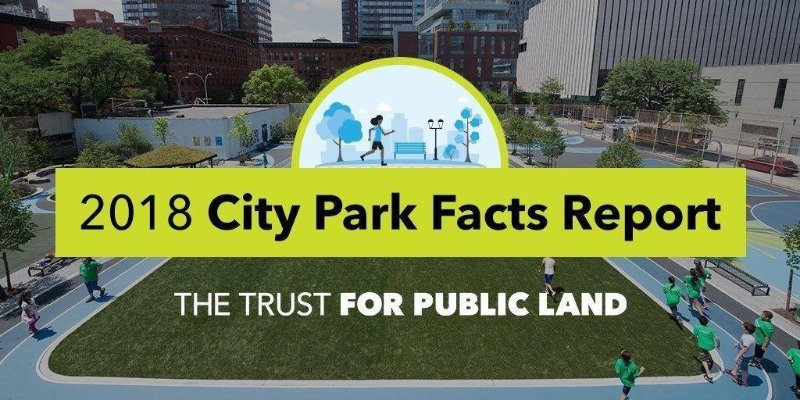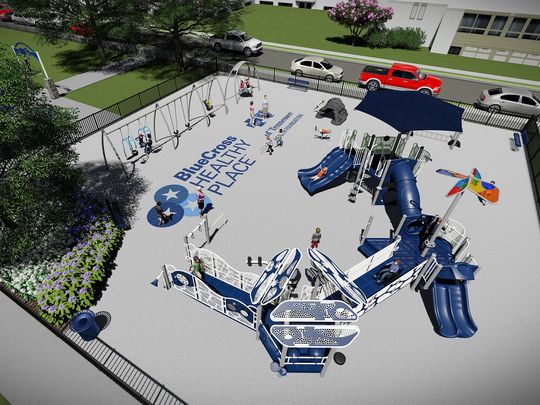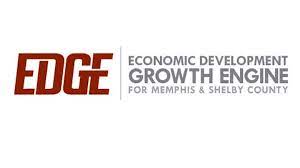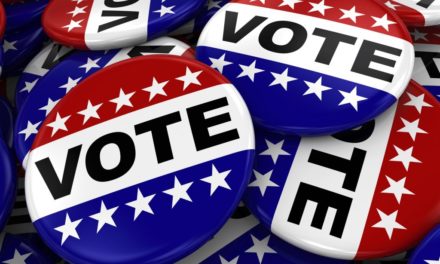There are so many reasons to advocate, support, and celebrate a high-quality urban park system.
Parks are in truth part of our health care system. They can be a crimefighting strategy. They can be about better childhood development. They can be anchors for a neighborhood. They can fulcrums for strengthened community pride and spirit.
But, more and more, these days, it is the revitalizing power of parks that is getting the most attention. That’s because parks invite people to do more than engage in physical activity. They invite people to be part of a community where the shared space is collectively theirs.
We have watched the impact of parks unfold in city after city where tens and hundreds of millions of dollars have been invested in new parks, climaxing with the opening Saturday in the 100-acre, $465 million riverfront park in Tulsa that is like no other.
Learning From Cities’ Lessons
Here, at home, Memphis seems to have learned the lessons from these other cities, finally embracing more progressive thinking about what makes a city distinctive and livable and the role that parks can play in accomplishing that.
It is evidenced most notably in the exhilarating plans for the riverfront. In a blog post in September 6, 2011, we expressed our wish for Memphis to create the FedEx of riverfront parks. That aspiration is finally within the city’s grasp and the newly minted Memphis River Parks Partnership is uniquely positioned to deliver it.
But that’s not all. There’s of course Shelby Farms Park, where its ambitions to be America’s great 21st century urban park, were achieved and surpassed, not to mention the impact of the Shelby Farms Park Greenline to change our national image.
And the Overton Park Conservancy continues to redefine and reposition a queen of Memphis parks that was envisioned more than a century ago when it was laid out as part of the Progressive Era’s grand parks and parkways plan. In truth, the reality these days is much more than a back to the future approach. It is indeed the path to the future for the diverse, inclusive, vibrant city that can compete with other cities in the future.
Making Progress
The Conservancy has begun a strategic master planning process for Overton Park with an emphasis on a business plan for capital improvements, maintenance, revenue opportunities, and finding tenants for two anchor buildings to be vacated in coming years, Rust Hall of Memphis College of Art and Memphis Brooks Museum of Art.
Meanwhile, Andre Gibson, formerly Greater Memphis Chamber executive, was hired in May to become executive director for Bloom, the new park advocacy and partnership organization in Memphis. A key to parks’ improvements in other cities has been the presence of similar groups who have pushed creative ideas and mobilized financial resources. Much of it hinges on the ability of the new parks organization and the administration of Memphis Mayor Jim Strickland to forge collaborative partnerships and working relationships.
If there’s a model for City Hall’s renewed emphasis and search for new funding sources, it is seen in the city-owned David Carnes Park in Whitehaven where BlueCross BlueShield of Tennessee Health Foundation is providing $4.5 million for new construction and $900,000 for a maintenance endowment to ensure its future upkeep.
For about a decade, the Memphis parks department has flirted with a strategic plan, beginning and stopping it a couple of times. Finally, parks director Maria Munoz-Blanco has launched it again with the resolve to complete it so that Memphis has its first comprehensive master plan for the city’s park system in many decades.
There had been suggestions for the Overton Park Conservancy to assume operations of The Links at Overton Park Golf Course, which seemed a logical shift in responsibilities from city government, but that decision has been delayed now until completion of the city’s park master plan.
Languishing Near The Bottom
We mention all this as context for this year’s Trust for Public Land’s annual survey of parks in America’s 100 largest cities. As it has since the report began, Memphis ranks at the bottom of the rankings – #91 out of 100 cities.
Because of the city government’s penchant for changing its budget calculations regularly, it is difficult, if not possible, to track the City of Memphis park investments over the past 20 years, but a former parks director often pointed out that when calculated for inflation, parks’ budgets had not increased in decades.
When Mayor Strickland took office, the budget reported that net expenditures for parks was $25 million a year and in the budget for 2019, it is $30 million.
Hopefully, that will result in a per capita increase in parks spending which has been stuck at $52 per Memphian for years. That includes both public and private funding.
The national median expenditure for the 100 largest U.S. cities is $83 per capita. Only 4.7% of the city’s area is used for parkland, so it is unsurprising that only 43% of Memphians have a park within a 10-minute walk from their homes. That compares to Nashville’s per capita spending of $81.
The annual survey ranks cities by an array of factors, including acreage, investments, amenities (basketball hoops, dog parks, recreation/senior centers, playgrounds, restrooms, and splashpads. Out of a maximum score of 160, Memphis scored 53.
It’s not overstatement to say that Memphis could be on the cusp of a renaissance in parks, and if it takes place, we will see it in the upcoming years of the Trust for Public Land’s annual rankings. Here’s hoping.
***
Join us at the Smart City Memphis Facebook page for daily articles, reports, and commentaries relevant to Memphis and the conversations that begin here.







I am at a point where I prefer other comparisons besides the boom town of Nashville. Pittsburgh has made more than 1 come back and the last once centered on Education, Arts and Parks…..
When I moved here in Sept 1974, Welcome Wagon visited me, for ~ 25 seconds.. handed me a basket, which contained a city map. I studied it, and was happy to see many good-sized parks. Only later did I learn they were almost all golf courses – not my idea of fun.
We compared Memphis to Nashville because both cities have to operate within the same laws and tax structure. Pittsburgh benefits from income tax and massive foundation funding for its quality of life amenities.
I second the motion to stop the Nashville/Memphis comparison. First of all, I lived in Nashville and moved back to Memphis. I feel Nashville is overrated (based on aforementioned fact) and Memphis is underrated. More on that in future posts. Thanks for pointing it out Joe Kent.
No one has suggested an end to the Memphis-Nashville comparisons morethan us. Over and over and over.
But there is value when looking for a comparison that is relevant within the context of state laws, the approved (and regressive) state tax structure, etc.
It seemed less relevant to us to compare Memphis to cities with totally different revenue mixes and options. Nashville was the only Tennessee city in the ranking. Otherwise, as usual, we would have listed the others.
In our first draft, we had Louisville, Indianapolis, Austin, etc., and we eliminated those because of the incongruities of the comparisons.
More to the point, Nashville’s commitment to parks predates its boom. A contributing cause?
Thank you for all the hard work you’re doing to bring forth thought provoking issues facing Memphis and please know I’m cheering on more. It’s starting to feel as if the vibe/sentiment locally is really turning the corner for the better this time.
I enjoy reading your posts.
Thanks for explaining why you included Nashville. Makes sense. But when it comes to comparing economies, it makes no sense – as you have said many times.
Smart City your research rationale makes sense to include Nashville. For example, I would include Nashville with comparison of academic achievement given the standardization of available data. Given the option though, I prefer comparisons to peer averages which I believe you elude to in rankings and direct comparisons to non capitol / border cities like Louisville and Kansas City firstly given some commonalities and others in our peer group secondarily….
I agree Parks sprinkled throughout the city would be an awesome thing. I visit Riverfront Park and Shelby Farms Park fairly often and enjoy them. That said, lets not equate “exhilarating plans” with actual Park improvements. When these plans are actualized then I will get excited.
A 20% increase in the parks budget is certainly a good start! I am hesitant to get excited about the Parks master plan, based on our track record of executing plans or ignoring the public input that doesn’t resonate with pre-existing plans. The true report card will be turning the tide on population loss in our region.
Aaron – We are a planning juggernaut here. Execution for the customer taxpayer is terrible to the point of making you wonder are they actually trying to botch this up. Its not that mistakes are made during execution but the lack of course correction that makes you think is the execution botch on purpose ? Stunning…..
I’m all for comparisons to Nashville which just happens to be our state’s capital city. Decisions from there have daily impacts on our local lives.
I also know Memphis has lost the race to most every comparisons to Nashville, but we should try to adopt some of their big successes. They many have beautiful and large parks as well as two big lakes for recreation.
I just wish we had the jobs, great universities and wonderful amenities Nashville has enjoyed for years. Case in point of our envy is a Trader Joe’s store which is all my friends want to talk about and they’ve had that store in Nashville 10 years or more. Memphis is just so way behind.
The Division of Parks bought the Spanish American War Park annex off South Cox a year ago. Our neighborhood offered to help fund tree replanting and clean up of the annex. This has been a one sided ongoing conversation between the Park Department and neighbors surrounding the park. Upper management of the Parks Department will not return phone calls or schedule appointments with our neighborhood group. It’s hard to imagine how we can improve our Parks if upper and middle park management will not work with neighborhoods.
Lula: Here is some good news. Trader Joes opens this month in our area!
Not only do they have two big recreational lakes, Nashville also has two major water parks and a third one in the works.
@jshellab@comcast.net If you want a response from upper parks management you will probably need to cc the Mayor.
Jshellab, Such inaction I find here to be an uncommon cultural norm. It’s really strange and have been researching the alarming phenomena for almost 3 yrs.
That’s a hard one to gauge Joe without reaching out to a lot directors in different cities and seeing how they respond. My guess is that a lack of response is fairly common in a lot of city governments. Again, just a guess. I can say that my personal experience with our past park director, when it comes to timely email responses has been less than stellar. But at then end of the day she was very instrumental in obtaining the funding for our public skate park so looking back I could forgive our poor email communications.